The Cherepish Monastery Assumption of Virgin Mary is situated near one of the most picturesque meanders of the Iskar River in the bosom of the Balkan Mountain Range. 
There are many legends about this monastery and its name. Most of them are linked with the last desperate battles of Tsar Ivan Shishman with the Ottoman invaders. 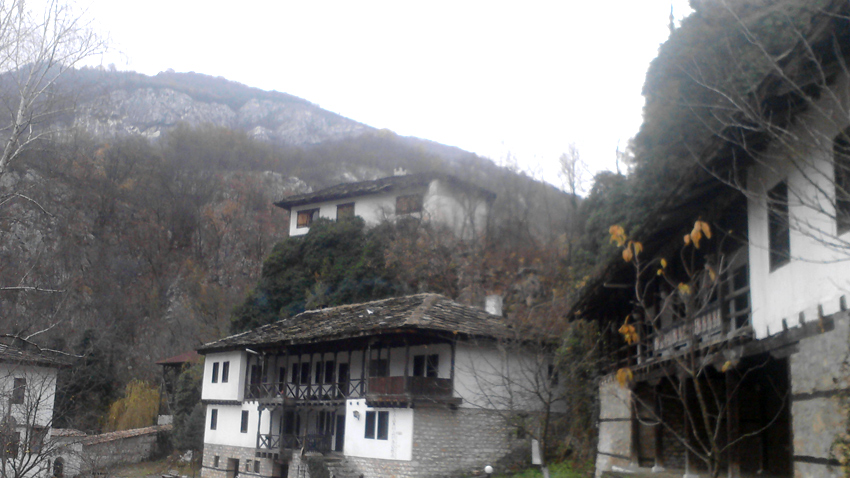
Alexandra Petrova from the Regional History Museum Vratsa brings details about the role of the monastery over the years:
One of the earliest manuscripts is associated with the Cherepish Monastery. This is a statute written at the end of the 14th century when Medeival Bulgaria fell under Ottoman rule. According to this statute the monastery was destroyed and later restored in 1396. In other words, it was established during the Second Bulgarian State. It was burned down and plundered many times over the years. During the Ottoman rule the Cherepish Monastery was an important literary, cultural and religious center. In the 17th century a church school was founded at the monastery which played an important part in the preservation of the Bulgarian language and script. Men of letters Partenyi Pavlovich and Jacob who wrote The Book of Apostles in 1630 once lived in the monastery. Priest Todor of Vratsa who wrote the collection of sermons and precepts entitled “Margarit” (Pearls) in 1762 also lived there. In 1797 celebrated Bulgarian revival leader and man of letters Saint Sophronius of Vratsa, who was persecuted by the governor of Vidin district Osman Pazvantoğlu, found shelter in the Cherepish Monastery. Between 1950 and 1990 the Sofia Theological Seminary St John of Rila was based in this monastery. During the Second World War the Holy Synod of the Bulgarian Orthdox Church was evacuated to the monastery.
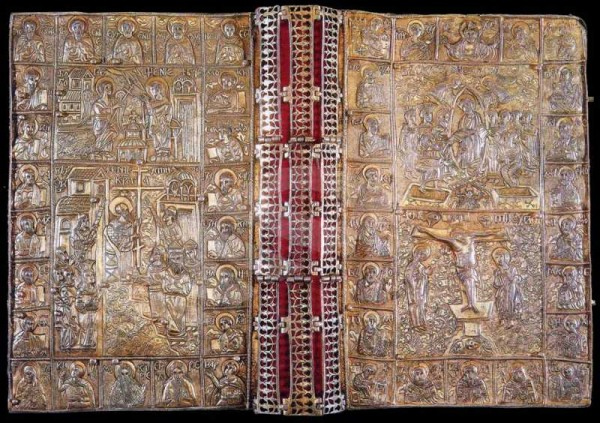 Here is what Mrs. Petrova told Radio Bulgaria about the monuments of the Bulgarian literary heritage created at the monastery:
Here is what Mrs. Petrova told Radio Bulgaria about the monuments of the Bulgarian literary heritage created at the monastery:
The Cherepish Gospel which is currently displayed at the Regional Museum of History in Vratsa was written in this monastery. It is a wonderful model of the medieval calligraphic mastery of the 16th century. In 1612 it was enclosed in silver and golden bindings made by celebrated at that time goldsmiths Nikola and Pala. A copy of the gospel was made in 1616, known as the Gospel of Monk Danail. It is kept in the Saint Nicholas Church in Vratsa. Writings of Patriarch Evtimii of Tarnovo were also found at the Cherepish Monastery.
The monastery church which was also destroyed and restored over the years attracts visitors’ interest:

In the beginning of the 17th century the church was renovated by Saint Pimen Zograph - a Bulgarian clergyman, icon painter and builder. When Pimen returned from Mount Athos he renovated nearly 300 churches and 15 monasteries. His patriotic deed is mentioned even in Slav-Bulgarian History by Saint Paisius of Hilendar. The first layer of the church’s icon-paintings dates back to the beginning of the 17th century and is supposed to have been painted by Pimen Zograph himself. 
The murals date back to the 19th century and were painted by Yonko Popvitanov from the town of Tryavna and Vasil Iliev from the village of Dobarsko. An old shroud embroidered in 1844 is part of the church interior.
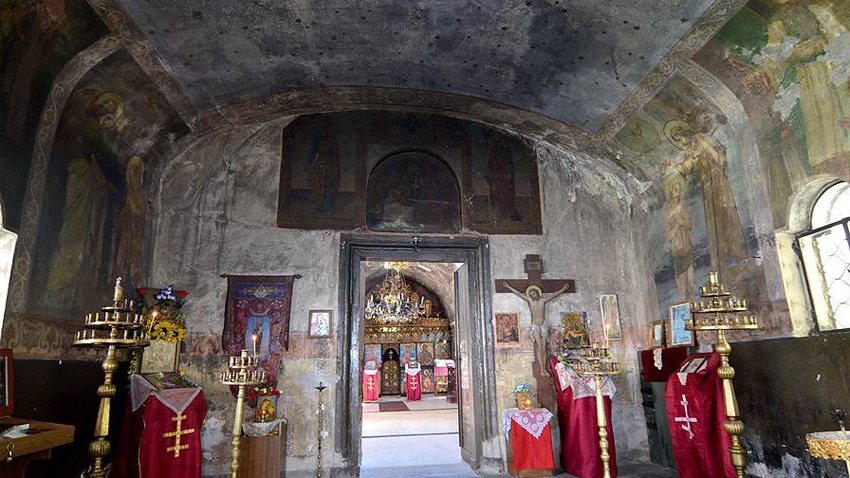
Alexandra Petrova has more about the buildings at the monastery complex which date back to the 19th century:
A chapel of Saint reverend Pimen Zografski was built in the bishop building. The legend has it that the Rushidova House was built by governor of Vratsa Rushid Bey whose daughter was seriously ill. Once, Mother of God came into his daughter’s dreams and told her to seek salvation in the Cherepish monastery. Her parents were discouraged by their multiple attempts to help her and although they were of different religion they took her to the monastery and she recovered soon after. In return, Rushid Bey built a house on the inaccessible cliffs. 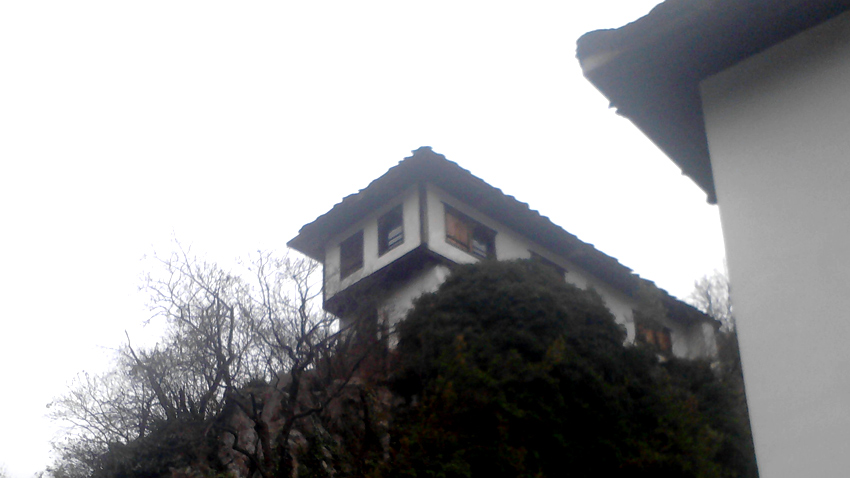
Another legend has it that the sword of Bulgarian revolutionary Hristo Botev was kept in this house, brought by the monks after the battle against the Turks, in which the poet and revolutionary was killed during the April 1876 uprising. Now his sword is displayed at the Vratsa Regional Museum of History. The monastery ossuary vault was built in 1784 by abbot Epifanii. It is supposed to keep the bones of twelve revolutionaries of Botev’s detachment. 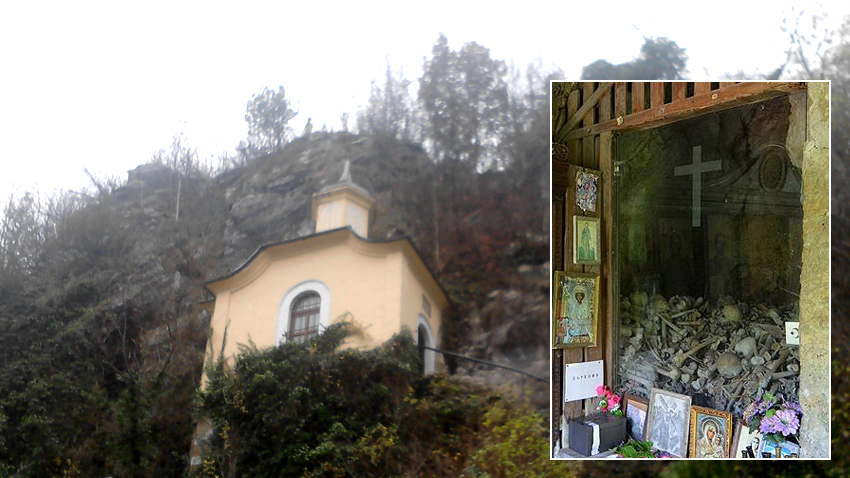
Ivan Vazov’s corner and terrace evidence that the Patriarch of the Bulgarian literature also stayed there. Ivan Vazov was inspired by the stories of the monks and the local people and wrote 48 lyrical pieces included in Skitnishki Pesni (Wanderers’ songs) series. Writer Aleko Konstantinov also stopped there during his tour of the region. Following his visit to the monastery he wrote the popular itinerary called Bulgarian Switzerland. Hungarian traveler Felix Kanitz was also astounded by the beautiful nature of the region and called the Cherepish Monastery “the most beautiful place on Earth”.
An archaeological expedition led by Assoc. Prof. Dr. Boni Petrunova – Director of the National Museum of History, discovered a massive bronze statuette of a goddess from the Greco-Roman pantheon. The artifact was found in residential premises in the..
13 ancient graves were discovered during archaeological excavations conducted on the premises of the National Academy of Art in Sofia. The excavation is led by archaeologist Elena Nikolova from the Regional History Museum. The excavations began on..
Trapezitsa is one of the three hills for which the old Bulgarian capital, Tarnovgrad (the medieval name of today’s Veliko Tarnovo), is famous . Located to the northwest of the town, it stands across from the neighboring hill Tsarevets – the..

+359 2 9336 661
